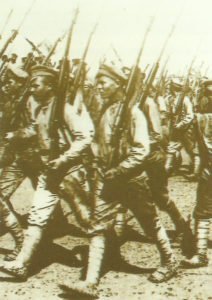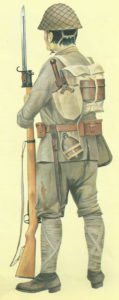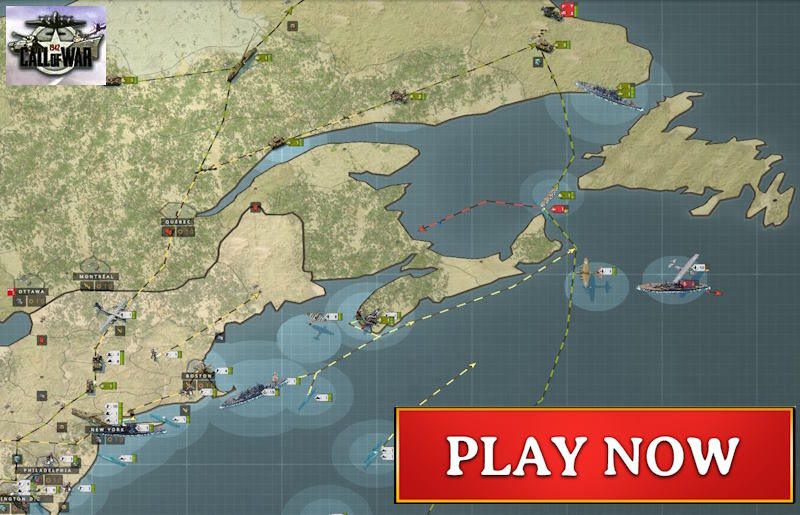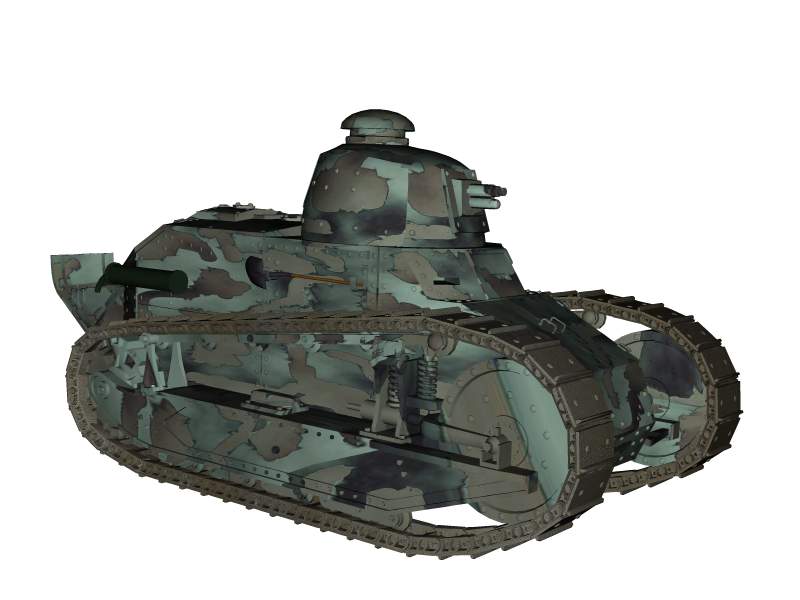Japanese infantry rifle Type 38 Ariska from 1897 to World War II.
History, development, service, specifications and pictures.

Japanese Ariska infantry rifle Type 38
Table of Contents
Ariska rifle Type 38
Type: Infantry rifle.
History
When the Japanese Army, like many others, decided to introduce a magazine rifle, it came to the realization that the Mauser system was the best solution. But like some other armed forces, they preferred their own product and had some other ideas about what makes a good rifle. So they took Mauser as a starting point and developed their own version.

The design was the work of today unknown technicians, but the commission, which was set up by the emperor for the development of the new rifle, was headed by Colonel N Ariska. And that’s why the rifle has since been known by its name.
The first repeating rifle Model 30 was completed in 1897 and perfected in 1905. This weapon, designated Meiji 38, was introduced in 1905, which was the 38th year of the reign of the Japanese Emperor Meiji, hence the designation Model 38. The weapon replaced the original Model 1897 and had two or three improvements.
The mechanism is basically like that of Mauser, but with a large mushroom-shaped safety button on the back of the bolt, which led to a revision of the trigger mechanism. In addition, some characteristics of the Mannlicher rifle were adopted, combined with some Japanese developments.

An unusual addition, which is only rarely available in preserved specimens, was a sheet metal cover, which worked together with the bolt and prevented rainwater or dust from entering the mechanism. While this functioned as intended, as with most other such devices of a similar nature, it was threadbare and tended to rattle at the most adverse moments, indicating the position of the wearer of the weapon. So most of these covers were ‘lost in action’ at the first opportunity.
Like the Italians, the Japanese also came to the realization that their older 6.5 mm caliber was not efficient enough and therefore developed a new 7.7 mm cartridge in the 1930s as a replacement. As a logical consequence, a rifle had to be developed which could fire this cartridge. This was no more than a caliber-drilled Model 38 as Type 99. It had some other questionable new features, such as a special visor for shooting on low-level planes, but this affected the weapon’s rate of fire.
However, few of the new rifles reached the hands of the troops and the Japanese were no more successful than the Italians in the change of caliber, which was mainly due to production difficulties.
As a result, the 6.5 mm cartridge with the associated rifle remained the Japanese standard during World War II. The Model 38 became one of Japan’s most famous and well-known infantry weapons.
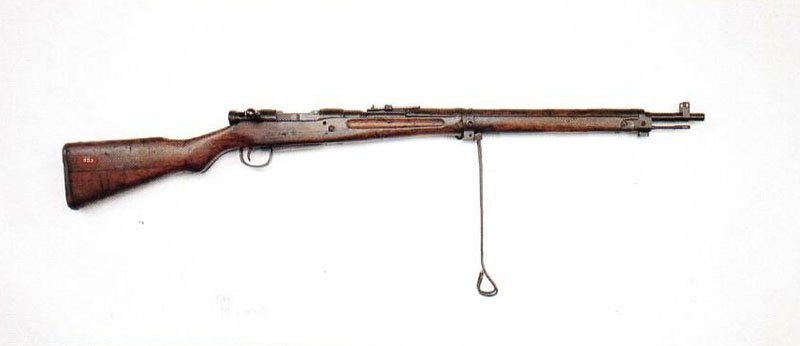
Variants

Carbine M1938: Allegedly made for cavalrymen and artillerymen, this model was also used by Japanese infantry, who even preferred it to the standard rifle because of it’s about a foot shorter length and a half a pound lighter weight. The mechanism of the weapon was the same as the long rifle. In addition, there was a foldable version for the parachute arm.
Sniper Rifle M97: This was the original Ariska rifle with an extra bipod and a low resolution scope on the left side of the rifle to allow reloading. The locking handle was folded down to prevent the shooter’s hand from contaminating the visor when the bolt was operated.
Specifications Ariska Rifle Meiji 38
Specifications:
Ariska Meiji 38 | specification |
|---|---|
Type | infantry rifle |
Caliber | 6.5 mm (Type 99: 7.7mm) |
Length | 50.25in (1.275m) |
Weight | 9.25lb (4.2kg; Type 99: 4.1kg) |
Barrel | 31.45 in long, 6 grooves, right hand twist |
Feed system | 5-round integral box magazine |
System of operation | Mauser turnbolt |
Muzzle velocity | 2,400 ft/sec (731m) |
Rate of fire | ? |
Effective range | ? |
Service statistics:
Ariska Meji 38 | specification |
|---|---|
Manufactures | State arsenals |
Production delivery | 1905 |
Final delivery | 1945 |
Production figure | ? |
Price per unit | ? |
References and literature
The Encyclopedia of Infantry Weapons of World War II (Ian V.Hogg)
Infanterie im 2. Weltkrieg (J.B.King, John Batchelor)
Illustriertes Lexikon der Waffen im 1. und 2. Weltkrieg (V. Dolinek, V. Francev, J. Sach)
The Encyclopedia of Weapons of World War II (Chris Bishop)





